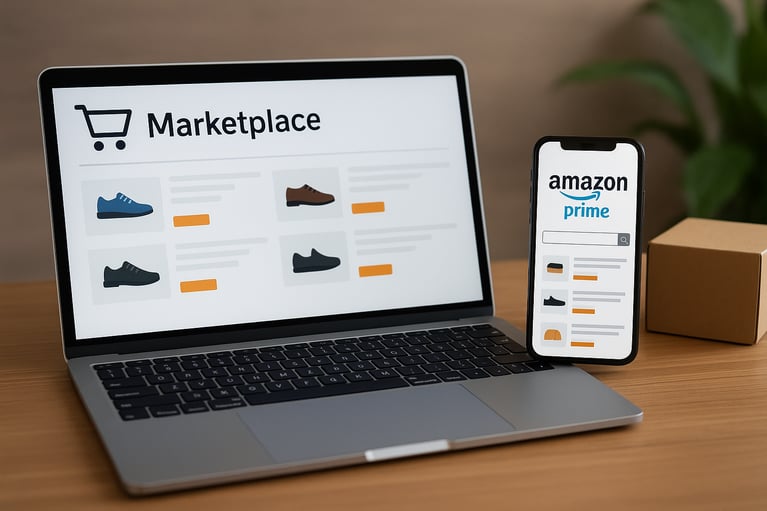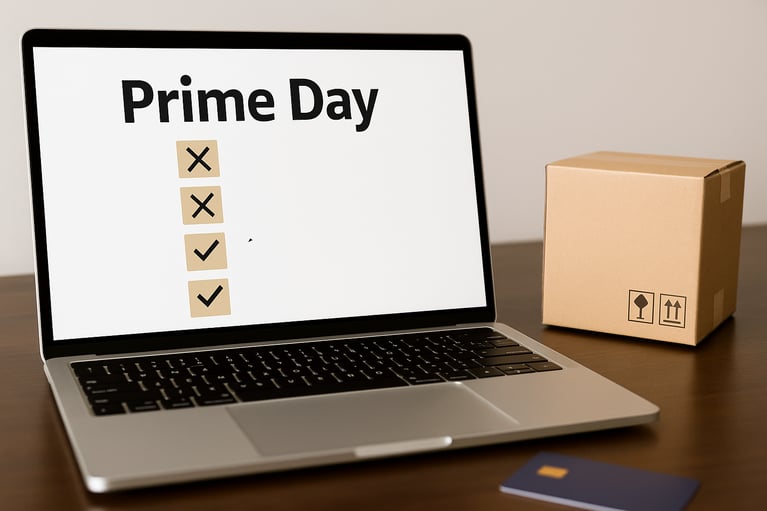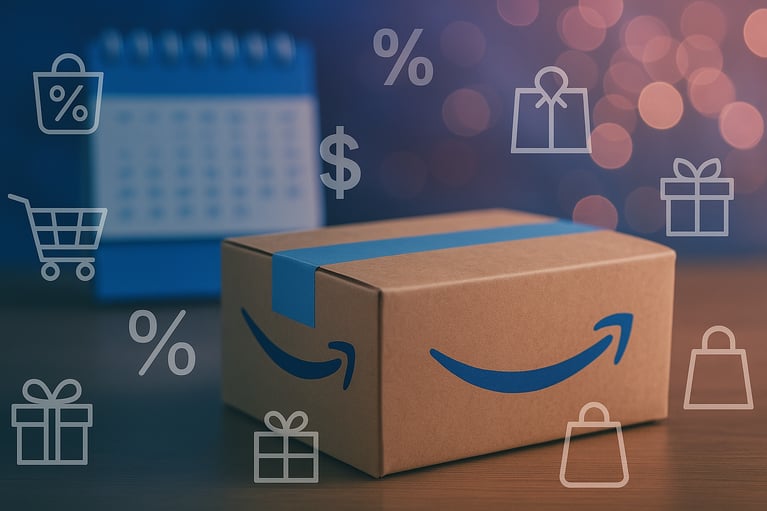Amazon threw a curveball this year by turning Prime Day into a 4-day shopping marathon—and the ripple effects were immediate. Retailers like Walmart, TikTok Shop and Target quickly extended their own promotions, creating a longer, more competitive sales window than ever before.
So, how did it all shake out? Let’s dive into the numbers, the strategies that worked and what brands should be thinking about as we head into fall Prime and the holiday season.
Prime Day by the numbers
Amazon’s extended Prime event delivered a staggering $24 billion in global revenue, with participating brands seeing an average 34% year-over-year growth, according to Pacvue.
At Cart.com, our brands didn’t just keep up—they outpaced the market:

What helped brands win?
Inventory readiness
Brands that had inventory in place despite ongoing supply chain and tariff challenges were best positioned to capitalize on demand. Our customers who had supply chain disruption were the ones who did not realize their full potential.
Off-channel traffic
Social media, influencer content, and publisher placements (think “Best Prime Day Deals” lists) played a huge role. Brands that invested in off-Amazon visibility saw stronger lifts.
Smart discounting
Despite the buzz around 40%+ discounts for high visibility, our brands found success with 20–30% promotions, preserving margin while still driving volume. It enabled our team to reallocate dollars to strategic media to set us up for long-term growth and audience capture for post-even retargeting and brand tailored promotions.
Strategic media planning
We don’t believe in investing everywhere just because of a tentpole event. Our media approach is about intentional targeting—deciding where to win, who to defend against, and which audiences to capture. That focus helped us spend smarter and build long-term growth. Our spend was not wasted trying to capture everyone in a category; it was focused on targeting direct price thresholds and competition. We not only defended our pages, but had strategic placements to capture competitive sales.
Cost efficiency
Average CPCs across our portfolio dropped 16% YoY, from $2.51 in 2024 to $2.12 in 2025. This reflects brands pacing budgets more carefully across the longer event window. Since the promo period was extended (likely after budgets were set for the year based on a 2-day plan), brands had to find ways to fund the event given the uncertainty of how shoppers would respond.
Strategic playbook for fall Prime & BFCM 2025
As we look ahead to Fall Prime and the Black Friday / Cyber Monday (BFCM) season, brands must prepare with precision. This year’s extended Prime Day—spanning four days—offered a preview of what’s to come: drawn-out promotional windows, shifting purchase behavior, and heightened competition for consumer attention. Here’s how to stay ahead:
-
Inventory positioning
Q4 event planning requires more rigor and proactive planning. Ensure healthy inventory across key items especially given ongoing import PO disruptions. Without strong in-stock rates, you risk missing peak demand moments at a time when check-in times start to get longer, and volumes accelerate. It’s imperative to get items to Amazon in time to deliver on sales, but over the next few months, you also might need to clear out inventory to reduce fees on slow moving products.
- Plan campaigns early, lock them in and prepare for pivots.
New campaigns take time to scale. Avoid last-minute overhauls or launches too close to peak, especially with media. Algorithms reward maturity and relevance, so give campaigns time to ramp up. Pre-build, test and optimize before crunch time. When the event starts, maintain clarity around pacing to decide when to dial spend up or down based on the competitive dynamics. There is a possibility that for longer events, brands will be more aggressive on Day 1 for maximum visibility and then slow spend if the purchase behaviors of July Prime hold true.
- Be strategic with deal structure
Visibility is important, but profitability matters too. Focus top-tier discounts on core items that drive volume and attach slightly lower discounts to the rest of the promoted portfolio. Then use media to push traffic to those high-value offers to capture shoppers' attention. Avoid blanket deep discounts; surgical pricing and traffic wins while preserving margin.
- Create proactive discovery moments
Plan now for influencer placements, affiliate integrations, and inclusion on “best of” and gift list roundups. AI assistants and search algorithms are increasingly pulling from curated third-party sources so being on a “best deals” or “gift list” can help drive Amazon sales. With Amazon’s recent partnerships with publishers (ex: Conde Nast), we expect to see the on-platform AI shopping tools (Rufus, Shopping guides) play a stronger role in future tentpole events.
- Plan for post-event success
Reserve dollars for capturing post-event sales through retargeting media campaigns or brand tailored promotions. We typically observe strong lifts post-events by capturing an audience that was already highly engaged. Another opportunity exists within categories that are more prone to faster repeat purchases or an alternate product within a short timeframe post-purchase. It’s a prime opportunity to re-engage and drive incremental dollars.
We continue to learn and optimize with every major tentpole event. The keys to success are having a plan, but also having a plan that is routed in multiple scenarios and prepared for action. We constantly have to be prepared to make decisions not only by the day but by the hour. It also requires advanced planning. If August 1 is here and you haven’t started a plan, you’re behind. At Cart.com, our marketplace team is your partner to navigate the strategy and execution of these events that can make or break your year and long term strategy.
Subscribe to our emails for the latest industry insights!
By entering your email, you agree to receive marketing emails from Cart.com





